 The Galaktica agent of the multi-faceted, many-membered Origami artcollective is one Benny Braaten. You might have encountered him latelast year opening for the Legendary Pink Dots on their North Americantour. There, he ensconced those smart enough to show up early in dronesand ambiance and manically bowed bass guitar strings. At themerchandise table were flyers advertising this forthcoming 7". Soonafter the tour I sent off $7 to Norway and about two months later therecord (one of 500) arrived. There are two versions of the title track,recorded in Canada and Norway respectively. Version I offers a slow,breathy drone that rises and falls at times into near silence,glass-like chimes gently touching in the distance. The latter half ofthe track gains new layers of warmth and the twinkles gain friction.Version II is more ominous with a sustained, darker hued hum as subtletrombone notes effectively add to the aura. It's nice, soothing stuff,but with both tracks clocking in at just under five minutes, it reallyleaves you wanting for more, such as the stunning 'Stjernevandring /Eesti Lilled Silmad Süda' double CD from Norway's Jester Records. Thedigital format certainly allows Origami Galaktika's music the mammothtrack times it deserves.
The Galaktica agent of the multi-faceted, many-membered Origami artcollective is one Benny Braaten. You might have encountered him latelast year opening for the Legendary Pink Dots on their North Americantour. There, he ensconced those smart enough to show up early in dronesand ambiance and manically bowed bass guitar strings. At themerchandise table were flyers advertising this forthcoming 7". Soonafter the tour I sent off $7 to Norway and about two months later therecord (one of 500) arrived. There are two versions of the title track,recorded in Canada and Norway respectively. Version I offers a slow,breathy drone that rises and falls at times into near silence,glass-like chimes gently touching in the distance. The latter half ofthe track gains new layers of warmth and the twinkles gain friction.Version II is more ominous with a sustained, darker hued hum as subtletrombone notes effectively add to the aura. It's nice, soothing stuff,but with both tracks clocking in at just under five minutes, it reallyleaves you wanting for more, such as the stunning 'Stjernevandring /Eesti Lilled Silmad Süda' double CD from Norway's Jester Records. Thedigital format certainly allows Origami Galaktika's music the mammothtrack times it deserves. The Galaktica agent of the multi-faceted, many-membered Origami artcollective is one Benny Braaten. You might have encountered him latelast year opening for the Legendary Pink Dots on their North Americantour. There, he ensconced those smart enough to show up early in dronesand ambiance and manically bowed bass guitar strings. At themerchandise table were flyers advertising this forthcoming 7". Soonafter the tour I sent off $7 to Norway and about two months later therecord (one of 500) arrived. There are two versions of the title track,recorded in Canada and Norway respectively. Version I offers a slow,breathy drone that rises and falls at times into near silence,glass-like chimes gently touching in the distance. The latter half ofthe track gains new layers of warmth and the twinkles gain friction.Version II is more ominous with a sustained, darker hued hum as subtletrombone notes effectively add to the aura. It's nice, soothing stuff,but with both tracks clocking in at just under five minutes, it reallyleaves you wanting for more, such as the stunning 'Stjernevandring /Eesti Lilled Silmad Süda' double CD from Norway's Jester Records. Thedigital format certainly allows Origami Galaktika's music the mammothtrack times it deserves.
The Galaktica agent of the multi-faceted, many-membered Origami artcollective is one Benny Braaten. You might have encountered him latelast year opening for the Legendary Pink Dots on their North Americantour. There, he ensconced those smart enough to show up early in dronesand ambiance and manically bowed bass guitar strings. At themerchandise table were flyers advertising this forthcoming 7". Soonafter the tour I sent off $7 to Norway and about two months later therecord (one of 500) arrived. There are two versions of the title track,recorded in Canada and Norway respectively. Version I offers a slow,breathy drone that rises and falls at times into near silence,glass-like chimes gently touching in the distance. The latter half ofthe track gains new layers of warmth and the twinkles gain friction.Version II is more ominous with a sustained, darker hued hum as subtletrombone notes effectively add to the aura. It's nice, soothing stuff,but with both tracks clocking in at just under five minutes, it reallyleaves you wanting for more, such as the stunning 'Stjernevandring /Eesti Lilled Silmad Süda' double CD from Norway's Jester Records. Thedigital format certainly allows Origami Galaktika's music the mammothtrack times it deserves.The LTM label seems to have dedicated itself to reissuing work byFactory Records bands of the early 1980s who never quite became thenext New Order, Joy Division, or Happy Mondays. So far, they haveheroically compiled full CDs for bands who might only have had only one7" on Factory, or whose work might have been overshadowed by thedominating mythos of that label or of producer Martin Hannett. Lately,LTM has exhumed a band who were one of Factory's strangest signings, aDutch trio called Minny Pops. These two CDs comprise the group's secondLP, 'Sparks in a Dark Room' (here coupled with contemporaneous 7" anddemo material) and 'Secret Stories,' which is a collection of more 7"singles, demos, and excerpts from their third and fourth albums.
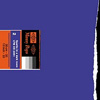 The question now is, since collectors have been clammoring for theserecords for so long, have they actually been worth the wait? I'd sayso, but with some reservation. Minny Pops' yet-to-be-reissued debutalbum, "Drastic Measures, Drastic Movements" from 1979, was a bizarremix of noise, new wave, synth pop, and Yello-like cabaret goofiness. Itis one of the most genuinely tweaked documents of DIY electro-pop, arecord which to this day causes heads to be scratched in satisfyingbewilderment. As the group's members aquired careers as record labelexecutives (at Boudisque, Play it Again Sam, etc), the music that theyproduced became more accessible, the noise nearly vanished, andrecognizable industrial-funk genre trappings emerged. If you're awareof the music happening in Belgium in the early 1980s (particularlySiglo XX, the Neon Judgement, and A Blaze Colour) then the gloomymonotone grooves of 'Sparks in a Dark Room' will immediately soundfamiliar. But there's something different here; on 'Sparks,' thereexists an implacable note of self-awareness and humor which seperatesthe album from those by other practitioners of the style. Tunes like "AFeeling" and "Night Visit" are perversely catchy, with lyrics that tendtoward self-effacing. I like that. The humor, however subtle, offsetsthe otherwise overbearing gloom.
The question now is, since collectors have been clammoring for theserecords for so long, have they actually been worth the wait? I'd sayso, but with some reservation. Minny Pops' yet-to-be-reissued debutalbum, "Drastic Measures, Drastic Movements" from 1979, was a bizarremix of noise, new wave, synth pop, and Yello-like cabaret goofiness. Itis one of the most genuinely tweaked documents of DIY electro-pop, arecord which to this day causes heads to be scratched in satisfyingbewilderment. As the group's members aquired careers as record labelexecutives (at Boudisque, Play it Again Sam, etc), the music that theyproduced became more accessible, the noise nearly vanished, andrecognizable industrial-funk genre trappings emerged. If you're awareof the music happening in Belgium in the early 1980s (particularlySiglo XX, the Neon Judgement, and A Blaze Colour) then the gloomymonotone grooves of 'Sparks in a Dark Room' will immediately soundfamiliar. But there's something different here; on 'Sparks,' thereexists an implacable note of self-awareness and humor which seperatesthe album from those by other practitioners of the style. Tunes like "AFeeling" and "Night Visit" are perversely catchy, with lyrics that tendtoward self-effacing. I like that. The humor, however subtle, offsetsthe otherwise overbearing gloom. 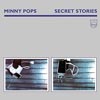 The "Secret Stories" compilation is problematic, though I am glad thatit exists. In other words, if tracks from the band's 1985 reunion LP,'4th Floor,' and their 1983 soundtrack to 'Poste Restante' were notreissued in some form, there would always be someone crying "Whydoesn't someone reissue those other two Minny Pops records I can'tfind?". The tracks from both of these albums, which make up the discs'ssecond half, recall some of Tuxedomoon's post-Ralph schmaltz, with thehumor replaced by opaque melodrama. My curiosity about these longout-of-print LPs is now satisfied, but I don't particularly want tohear the music again. Perhaps that's why the albums were not reissuedin their entirety (a smart move on LTM's part). However, what's greatabout "Secret Stories" are the 7" tracks that make up the disc's firsthalf, including the classic "Dolphin's Spurt" (a different version thanthe one on 'Drastic Measures'), and several wonderfully rough 1981demos. These show the band at their best, a balance of bizarreelectro-funk and edgy industrial disco. The comparison to early Yelloisn't so far off (and, though I don't really want to validate thevenomous English journalists of 1980 who sought to destroy Factorybands by comparing them all to Joy Division... well, with these 7"s,the comparison is tough not to notice), but Minny Pops were more subtleand much darker. With hindsight, it's easy to imagine which other bandsmight have listened to these records before starting bands of their own(especially the Neon Judgement), adding more bombast to the grooves.Listening to both CDs makes me yearn for the profound oddness thatmarked 'Drastic Measures, Drastic Movements,'which is simply notpresent here.
The "Secret Stories" compilation is problematic, though I am glad thatit exists. In other words, if tracks from the band's 1985 reunion LP,'4th Floor,' and their 1983 soundtrack to 'Poste Restante' were notreissued in some form, there would always be someone crying "Whydoesn't someone reissue those other two Minny Pops records I can'tfind?". The tracks from both of these albums, which make up the discs'ssecond half, recall some of Tuxedomoon's post-Ralph schmaltz, with thehumor replaced by opaque melodrama. My curiosity about these longout-of-print LPs is now satisfied, but I don't particularly want tohear the music again. Perhaps that's why the albums were not reissuedin their entirety (a smart move on LTM's part). However, what's greatabout "Secret Stories" are the 7" tracks that make up the disc's firsthalf, including the classic "Dolphin's Spurt" (a different version thanthe one on 'Drastic Measures'), and several wonderfully rough 1981demos. These show the band at their best, a balance of bizarreelectro-funk and edgy industrial disco. The comparison to early Yelloisn't so far off (and, though I don't really want to validate thevenomous English journalists of 1980 who sought to destroy Factorybands by comparing them all to Joy Division... well, with these 7"s,the comparison is tough not to notice), but Minny Pops were more subtleand much darker. With hindsight, it's easy to imagine which other bandsmight have listened to these records before starting bands of their own(especially the Neon Judgement), adding more bombast to the grooves.Listening to both CDs makes me yearn for the profound oddness thatmarked 'Drastic Measures, Drastic Movements,'which is simply notpresent here.  While several Current Ninety Three live outings have been recorded andin due time released, Antony and the Johnsons five years ofperformances have not seen the same light of day. Perhaps that and the(at the time) upcoming Antony/C93 shows in Portugal and San Franciscowere reasons for Durtro to present this EP length disc featuring threetracks apiece from last April's shows. Antony is at the piano,accompanied by Johnson Maxim Moston on violin. "You Stand Above Me" isonly one minute and thirty-six seconds but contains all the melancholyand drama one would expect. Antony bellows "while eternity cycleswildly, inside me," over plaintive piano notes, the vibrato of hispowerful soprano nestling into every crevice of my mind, body and soul.Antony naturally adapts Edgar Allan Poe's lovely 1827 poem "The Lake"to song, a much more fitting tribute than Lou Reed's ill-advised 'TheRaven' (excepting Antony's minimal rendition of Reed's "Perfect Day").What follows is the tender "Cripple and the Starfish," and what soundslike a well deserved standing ovation. For C93's songs, David Tibet isaccompanied by usual suspects Maja Elliott on piano and MichaelCashmore on guitar. "Walking Like Shadow," from C93 and Nurse WithWound's 'Bright Yellow Moon' is musically true. Ditto the brief versionof "Judas as Black Moth" from 'Soft Black Stars' which also benefitsfrom additional lyrics, "in the middle of the night as the cats cry inthe street, and the scent of flowers is heavy in your hair, the carsweeps by with a murdered child, the car sweeps by with a violatedgirl". The mammoth title track from 'Sleep Has His House' is reduced tojust the main lyrical passage here, the piano and Tibet's voice risingto a fever pitch as he breathlessly chokes on emotion in remembrance ofhis father. It is magnificent. Too bad there's only three songs each.I'd happily pay more for more. Maybe, just maybe, a future show willcome closer to me than 1300 miles away.
While several Current Ninety Three live outings have been recorded andin due time released, Antony and the Johnsons five years ofperformances have not seen the same light of day. Perhaps that and the(at the time) upcoming Antony/C93 shows in Portugal and San Franciscowere reasons for Durtro to present this EP length disc featuring threetracks apiece from last April's shows. Antony is at the piano,accompanied by Johnson Maxim Moston on violin. "You Stand Above Me" isonly one minute and thirty-six seconds but contains all the melancholyand drama one would expect. Antony bellows "while eternity cycleswildly, inside me," over plaintive piano notes, the vibrato of hispowerful soprano nestling into every crevice of my mind, body and soul.Antony naturally adapts Edgar Allan Poe's lovely 1827 poem "The Lake"to song, a much more fitting tribute than Lou Reed's ill-advised 'TheRaven' (excepting Antony's minimal rendition of Reed's "Perfect Day").What follows is the tender "Cripple and the Starfish," and what soundslike a well deserved standing ovation. For C93's songs, David Tibet isaccompanied by usual suspects Maja Elliott on piano and MichaelCashmore on guitar. "Walking Like Shadow," from C93 and Nurse WithWound's 'Bright Yellow Moon' is musically true. Ditto the brief versionof "Judas as Black Moth" from 'Soft Black Stars' which also benefitsfrom additional lyrics, "in the middle of the night as the cats cry inthe street, and the scent of flowers is heavy in your hair, the carsweeps by with a murdered child, the car sweeps by with a violatedgirl". The mammoth title track from 'Sleep Has His House' is reduced tojust the main lyrical passage here, the piano and Tibet's voice risingto a fever pitch as he breathlessly chokes on emotion in remembrance ofhis father. It is magnificent. Too bad there's only three songs each.I'd happily pay more for more. Maybe, just maybe, a future show willcome closer to me than 1300 miles away. - Antony - The Lake
- Antony - You Stand Above Me
- Current 93 - Sleep Has His House
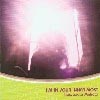 When Acid Mothers Temple played at last year's Terrastock festival,they performed a 45-minute set that completely galvanized the exhaustedcrowd. Having listened to the band's records for years, I was awestruckto be in the physical presence of the band's leader and guru, KawabataMakoto. Here was a man that I had was sure would be a gargantuan,superhuman presence. I was surprised to see that he was an unassuming,diminutive Japanese man with a scraggly head of long messy hair. Healso kept grinning uncomfortably at the crowd. I was somewhatdisappointed by Makoto's decidedly non-Shamanistic appearance, until hestruck the first riff on his electric guitar. Suddenly we were aware ofbeing in the presence of a cosmic messiah, an otherworldly atavisticguru who has the ability to deconstruct and destroy the entire historyof psychedelia, metal, and noise music within one guitar solo. Thisnewest solo outing from Kawabata Makoto is very different from mostAcid Mothers Temple records, however. Eschewing guitars almostcompletely, this album features three long pieces of subtly shiftingelectronic drones and vocal loops. "I'm In Your Inner Most" is apsychedelic drone journey to the center of your mind. Makoto pushes thedistortion on his electric organ, and fills out the texture withsynthesizers, violins and a female vocal sample that randomly fades inand out of the mix. Not very easily digestible at first, upon repeatedlistenings you begin to sense the true cosmic transendence of hismusic. LaMonte Young's influence can be heard in the first track - along, shape-shifting high-pitched squeal that cleanses the listener'smind of all thought, leaving only the rapturous sensation of sound. Thesecond track begins with the same drone, but adds delightfully cosmickeyboard arpeggios and cyclical melodies. Even throughout the beautifulmelodic sections, Makoto continues to push the noise and percussivedistortion so that the listener remains in a completely trancelikestate while investigating the astral worlds that the keyboards usheryou through. Shades of Tangerine Dream and Terry Riley become apparenttowards the end of this track, as the synthesizer loops takeprominence. The third track "Oculation (remix version)" contains thesame organ tones and repetitive synthesizers as the first two tracks,but adds some atonal guitar feedback into the mix. "I'm In Your InnerMost" is definitely an album that requires active listening to enjoy,and unfortunately the one-minute sound bites below cannot begin toapproximate the fully mind-bending listening experience that Makoto hascreated. It's like trying to understand a Jackson Pollock painting byclosely examining some paint globs on the lower right corner of thecanvas; not until you stand back and see the shape and dynamic of theentire work can its full glory be experienced. -
When Acid Mothers Temple played at last year's Terrastock festival,they performed a 45-minute set that completely galvanized the exhaustedcrowd. Having listened to the band's records for years, I was awestruckto be in the physical presence of the band's leader and guru, KawabataMakoto. Here was a man that I had was sure would be a gargantuan,superhuman presence. I was surprised to see that he was an unassuming,diminutive Japanese man with a scraggly head of long messy hair. Healso kept grinning uncomfortably at the crowd. I was somewhatdisappointed by Makoto's decidedly non-Shamanistic appearance, until hestruck the first riff on his electric guitar. Suddenly we were aware ofbeing in the presence of a cosmic messiah, an otherworldly atavisticguru who has the ability to deconstruct and destroy the entire historyof psychedelia, metal, and noise music within one guitar solo. Thisnewest solo outing from Kawabata Makoto is very different from mostAcid Mothers Temple records, however. Eschewing guitars almostcompletely, this album features three long pieces of subtly shiftingelectronic drones and vocal loops. "I'm In Your Inner Most" is apsychedelic drone journey to the center of your mind. Makoto pushes thedistortion on his electric organ, and fills out the texture withsynthesizers, violins and a female vocal sample that randomly fades inand out of the mix. Not very easily digestible at first, upon repeatedlistenings you begin to sense the true cosmic transendence of hismusic. LaMonte Young's influence can be heard in the first track - along, shape-shifting high-pitched squeal that cleanses the listener'smind of all thought, leaving only the rapturous sensation of sound. Thesecond track begins with the same drone, but adds delightfully cosmickeyboard arpeggios and cyclical melodies. Even throughout the beautifulmelodic sections, Makoto continues to push the noise and percussivedistortion so that the listener remains in a completely trancelikestate while investigating the astral worlds that the keyboards usheryou through. Shades of Tangerine Dream and Terry Riley become apparenttowards the end of this track, as the synthesizer loops takeprominence. The third track "Oculation (remix version)" contains thesame organ tones and repetitive synthesizers as the first two tracks,but adds some atonal guitar feedback into the mix. "I'm In Your InnerMost" is definitely an album that requires active listening to enjoy,and unfortunately the one-minute sound bites below cannot begin toapproximate the fully mind-bending listening experience that Makoto hascreated. It's like trying to understand a Jackson Pollock painting byclosely examining some paint globs on the lower right corner of thecanvas; not until you stand back and see the shape and dynamic of theentire work can its full glory be experienced. - 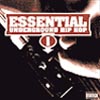 I've never hid my true feelings about "underground" rap music in myreviews. Whether I'm muttering about the lackluster Def Jux family,discrediting the Anti-Pop Consortium, or setting The Streets ablaze, Ishow love to the street-level lyricists who represent properly asopposed to digging through their backpacks for their thesauruses. Yes,I know that artists like Run DMC and Grandmaster Flash built rap music,but so did NWA and the Geto Boys. So when I spotted this budgetsampler, I was inititally skeptical until I scanned the roster: no DefJux names in sight. Released on indie Landspeed Records label, thislengthy compilation packs 19 tracks full of the diversity of theunderground, from hustlers and gangsters to Okayplayer heads andoldschool purists. With contributions from both well-known artists likeN.O.R.E. and 18 Cent (currently tearing up rap radio with two hitsingles from his album on Eminem's Shady Records imprint) as well asoriginators like Inspectah Deck and Big Daddy Kane, there's somethingfor everyone here. Mobb Deep brethren Infamous Mobb spit versesstraight outta Queensbridge over two trademark Alchemist produced cuts,reminding me once again that my borough rocks hardest. Speaking ofQueens, Cormega comes correct here as well, with "Built For This" fromhis latest album (which incidentally made my Top 10 List for 2002) theolder banger "Get Our Of My Way." The biggest surprises here are thehigh-quality unknowns like the Havoc-endorsed R.A. the Rugged Man.Produced by Ayatollah, "You Don't Wanna Fuck Wit" is rife with sweetbeats and pleasantly obscure references to Nabokov's infamous pervertHumbert Humbert and the road rage rich girl Lizzie Grubman. Also ofnote is Group Home, an assumedly Gang Starr-related project whose"Handle Your BI" emits serious head-nodding soul that could warm up thecoldest winter night. The overall outcome is impressive, despiteparticularly weak moments from 7L and Esoteric, Thirstin Howl III, andNon Phixion (whose tasteless rhyme about Michael J. Fox is as funny asanother Christopher Reeve joke, as just as original). Considering youcan find this CD online and in both large and independent recordretailers for around $6.00, you'd be foolish to pass up thisopportunity to get a good look at some of the best artists in theunderground today.
I've never hid my true feelings about "underground" rap music in myreviews. Whether I'm muttering about the lackluster Def Jux family,discrediting the Anti-Pop Consortium, or setting The Streets ablaze, Ishow love to the street-level lyricists who represent properly asopposed to digging through their backpacks for their thesauruses. Yes,I know that artists like Run DMC and Grandmaster Flash built rap music,but so did NWA and the Geto Boys. So when I spotted this budgetsampler, I was inititally skeptical until I scanned the roster: no DefJux names in sight. Released on indie Landspeed Records label, thislengthy compilation packs 19 tracks full of the diversity of theunderground, from hustlers and gangsters to Okayplayer heads andoldschool purists. With contributions from both well-known artists likeN.O.R.E. and 18 Cent (currently tearing up rap radio with two hitsingles from his album on Eminem's Shady Records imprint) as well asoriginators like Inspectah Deck and Big Daddy Kane, there's somethingfor everyone here. Mobb Deep brethren Infamous Mobb spit versesstraight outta Queensbridge over two trademark Alchemist produced cuts,reminding me once again that my borough rocks hardest. Speaking ofQueens, Cormega comes correct here as well, with "Built For This" fromhis latest album (which incidentally made my Top 10 List for 2002) theolder banger "Get Our Of My Way." The biggest surprises here are thehigh-quality unknowns like the Havoc-endorsed R.A. the Rugged Man.Produced by Ayatollah, "You Don't Wanna Fuck Wit" is rife with sweetbeats and pleasantly obscure references to Nabokov's infamous pervertHumbert Humbert and the road rage rich girl Lizzie Grubman. Also ofnote is Group Home, an assumedly Gang Starr-related project whose"Handle Your BI" emits serious head-nodding soul that could warm up thecoldest winter night. The overall outcome is impressive, despiteparticularly weak moments from 7L and Esoteric, Thirstin Howl III, andNon Phixion (whose tasteless rhyme about Michael J. Fox is as funny asanother Christopher Reeve joke, as just as original). Considering youcan find this CD online and in both large and independent recordretailers for around $6.00, you'd be foolish to pass up thisopportunity to get a good look at some of the best artists in theunderground today.- Cormega - Get Out of My Way
- Infamous Mobb - Mobb Niggaz
- 18 Cent - U Not Like Me
There was a cozy church sanctuary, a fully stocked merchandise table, three premier experimental artists, and an audience of about 75 people. It was a familial vibe all around, and quite unlike any other show I've ever been to.
William Basinski, sharply dressed in black suit, was introduced (by a guy I'm assuming is the head of Robot Records) and his set began about 8:15. On stage were two folding tables, the center one with six or so components and his Apple laptop on top, and one off to the right with a mixer and a large reel to reel tape machine. The set began with three or so shorter, continuous pieces then settled into one epic piece, probably 40 minutes, obviously one of Basinski's "Disintegration Loops." He occasionally looked at the laptop screen and reel to reel but spent the bulk of the time with the mixer faders, headphones on, very subtly and very patiently layering sources. The tape loop was literally disintegrating, ending up just a small strip by the end of the set. The whole piece sounded like an old orchestral recording. The repetition of the loop was relentless, but elements within the loop were very gradually transformed. I could sense the "percussion" falling out of time and later it seemed smeared, possibly reversed, in the mix. This was very soothing, engaging stuff. The crowd remained perfectly silent until the end and politely clapped. It was a very good start.
After a 10 minute intermission, Andreas Martin, more casual in blue windbreaker and blue jeans, was introduced. Martin is very unassuming and quiet but spoke some in German-inflected English. He told us the first song was written a few days ago while thinking about how nice it was to have the opportunity to come there (from Hamburg) to play for people. He gave us the German title and an English translation as "Lucky Mushroom." I had assumed that he would use the guitar and effects to produce drone-y stuff like the Mirror records I have, but it was nothing at all like that. These songs were very physical and intricate, melodic and rhythmic, with all the notes rapidly finger picked or hammered on by both hands. Harmonics and different tunings were frequently used and some songs included percussive bits where he either slapped the top of the guitar or the side (with his ring) underneath the fretboard. Between songs he would catch his breath and sweep back his curly black hair. One song was a cover of an American composer who died in 1997, the name I didn't quite catch. Martin finished his last song and shyly said "that's all," but we clapped crazily so he did another one, it being the most aggressive of them all.
After another brief intermission, Heemann took the stage, sat in a folding chair behind the center table, and was introduced. Most the of the time was spent looking at CD players and fiddling with knobs on the mixer. There were roughly three parts to his set. It began pretty abrasively, mostly with noise waves and some ambient sound that included a buried (Euro) emergency vehicle. The sound concentrated into a powerful, harsh drone for about half the set, suddenly stopped, and began again with a softer drone. It was this last drone that really, really sucked me in. Heemann made it ebb and flow some but it also maintained a constant frequency for its 20-minute duration. Everything suddenly stopped around 11:00 and Heemann departed stage rather quickly.
Soon after, my friend and I realized that Heemann's set had physiologically altered us (my equilibrium in particular - so much that I was afraid to drive for awhile). It was to remain that way for the rest of the night. Never before had we been so affected by live music. Did Heemann intentionally use frequencies that would have that effect on the audience? Did others feel like we did? Would we ever be the same again?
"I had so much to say."
First time I saw Low they were supporting Come at the London Garage and Kramer was doing their sound. They were enjoyable but I didn't feel motivated to rush out and buy their records. Since then they've just kept getting better and better, growing ever more assured, confident and orgasmic. Last week Low played the best gig I ever saw them do. The sound was perfect, immaculate, accentuating their pin drop precision, and the large crowd was held enraptured in awe. From the opener "Candy Girl" it was clearly the perfect fuck music, tragic make out make up for the last fling before she flies over the ocean. It had all the controlled intensity of their spartan Joy Division "Transmission" cover that had held the Star and Garter so enraptured on earlier trips to Manchester. The way Alan Sparhawk turns and strums at Mimi Parker and the way she taps calm heartbeat assurance is PURE SEX. It's so obvious Mimi is his his candy girl, and this is the sweet molten core of Low's slowburning genius. Alan and Mimi (ahem, and bassist Zack Sally) have fashioned a music that twists and turns with all the ups and downs of an intensely consummated relationship. "Candy Girl" also shows that maybe Steve Albini has had a little more influence on Low than just recording them. Alan throws out subtle jags of guitar skree at oblique angles to the heartbreak beat. The song cuts dead and they launch into the Peel-popular "That's How You Sing Amazing Grace" and the relatively stompin' "Canada" single. How can that Sparhawk dude sing "In the Drugs" without bursting into tears? It surely is one of the saddest songs I ever heard. Then there's the spaghetti western malevolance of "John Prine," a dark ode to revenge so quietly fiercesome it could ignite blue flames of paranoia in anyone who ever crossed a softspoken Duluth musician. Low can even make dear ol' drippy Roger Waters seem profound, with their majestic cover of "Fearless." On the way to the gig I was almost run over by a speeding car escaping gross corporate slavewage superstore. I had been moderately distracted by Come in my headphones, which would've been a fine thing to hear with my dying breath, but it was no time to leave the planet. A glimpse of mortality is always a lever for heightened sensuality. Don't waste your days with mediocre piffle. You might die tomorrow. Hurry up materialise, don't just threaten to. Flirt, take drugs, booze, shoot the shit with the people who are worth the effort. Soundtrack it with a band that fucking matters, and then some! Low are serious as your life.
"Now I'm gonna make them pay."
 Tigersmilk is free jazz improvisation by Rob Mazurek playing cornet andelectronics, Jason Roebke on bass and Dylan van der Schyff on drums."Free jazz" is a genre every bit as conservative as any in that mostconservative of musical realms: jazz. It has its standardizedtechniques, stock gestures and established styles and this CD is sodeeply into the manipulation of these familiar symbols that I wonder ifthe intent is post modern. Roebke and van der Schyff are both verycapable and skilled in such manipulations. Indeed Roebke boasts amasters degree in improvisation, a training that, judging by thisdocument, included almost all the elementary avant-garde bass playingtechniques that I loathe (the ugly-bowed harmonics, out of tune doublestopped chords, muted pizzicato, etc,...). When Roebke gets going inthe accompaniment role, the competent result is the Gary Peacock stylethat unlimited numbers of bass players apparently never tire ofimitating. An accompanying blurb quotes Jazz Times as comparing van derSchyff to Oxley and Lovens. This is informative only up to the pointthat van der Schyff can clatter around the kit in a fairly frenetic anddisconnected way like those Europeans do, but beyond that thecomparison is misleading. Firstly, he clearly sounds like a jazzer andsecondly, he is a sympathetic and supportive drummer rather thanleading the process by constantly challenging it. (Basically the quotemeans that van der Schyff can imitate the Lovens sound fairlyaccurately, which is true.) The contrast in musicianship betweenMazurek and the others on this CD could hardly be starker, and yetagain, what should be the last resort of stylistic imitation is in factthe first. Loud raspy trills and split-notes in familiar suddendisjointed gestures are offered up as a version of avant-gardeexpressionism. All in all, it's hard for me to imagine how anyone canreally get excited by playing all these tired old ideas again andagain, which is maybe why Tigersmilk sounds as though the players arealready bored by the whole thing.
Tigersmilk is free jazz improvisation by Rob Mazurek playing cornet andelectronics, Jason Roebke on bass and Dylan van der Schyff on drums."Free jazz" is a genre every bit as conservative as any in that mostconservative of musical realms: jazz. It has its standardizedtechniques, stock gestures and established styles and this CD is sodeeply into the manipulation of these familiar symbols that I wonder ifthe intent is post modern. Roebke and van der Schyff are both verycapable and skilled in such manipulations. Indeed Roebke boasts amasters degree in improvisation, a training that, judging by thisdocument, included almost all the elementary avant-garde bass playingtechniques that I loathe (the ugly-bowed harmonics, out of tune doublestopped chords, muted pizzicato, etc,...). When Roebke gets going inthe accompaniment role, the competent result is the Gary Peacock stylethat unlimited numbers of bass players apparently never tire ofimitating. An accompanying blurb quotes Jazz Times as comparing van derSchyff to Oxley and Lovens. This is informative only up to the pointthat van der Schyff can clatter around the kit in a fairly frenetic anddisconnected way like those Europeans do, but beyond that thecomparison is misleading. Firstly, he clearly sounds like a jazzer andsecondly, he is a sympathetic and supportive drummer rather thanleading the process by constantly challenging it. (Basically the quotemeans that van der Schyff can imitate the Lovens sound fairlyaccurately, which is true.) The contrast in musicianship betweenMazurek and the others on this CD could hardly be starker, and yetagain, what should be the last resort of stylistic imitation is in factthe first. Loud raspy trills and split-notes in familiar suddendisjointed gestures are offered up as a version of avant-gardeexpressionism. All in all, it's hard for me to imagine how anyone canreally get excited by playing all these tired old ideas again andagain, which is maybe why Tigersmilk sounds as though the players arealready bored by the whole thing.  The defining moment of an album is frequently its closer. It's the last chance to make a lasting impression on the listener that can turn a good album into a timeless classic. Looking back on the 1990s, 'Millions Now Living Will Never Die' ended with the lasting impression of "Along the Banks of Rivers," a tune which differed so much from the others on that record but was strong enough to leave many breathless. Without that unpredictable variety and solid strength that came with the borderline out-of-place "Banks," it's almost unsurprising that when asked about Tortoise, their subsequent albums, 'TNT' and 'Standards' rarely are mentioned as being as globally important.
The defining moment of an album is frequently its closer. It's the last chance to make a lasting impression on the listener that can turn a good album into a timeless classic. Looking back on the 1990s, 'Millions Now Living Will Never Die' ended with the lasting impression of "Along the Banks of Rivers," a tune which differed so much from the others on that record but was strong enough to leave many breathless. Without that unpredictable variety and solid strength that came with the borderline out-of-place "Banks," it's almost unsurprising that when asked about Tortoise, their subsequent albums, 'TNT' and 'Standards' rarely are mentioned as being as globally important.
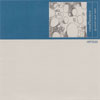 Intransitive Recordings has released one in a pair of discs by JohnGrznich and Seth Nehil that explores their prolonged colaboration ofthe last several years. 'Confluence' opens with an extended, airy droneand a slight whisper that leads into a repeated clanking rhythm thatgrows until another, deeper drone can supplant the first. Slowly,microorganisms made purely of sound begin to swell and collide as theopening piece, titled "Pneuma" in a vaguely scientific artspeak createsa self-sustaining colony of sounds as beings. Of course, thesound-organisms don't have to abide by the physical laws and socialrules that real beings would, and so the analogy ends there. ButGrznich and Nehil have set out to create organic sound systems with'Confluence' and the differentiation between an organic system and asymbol of one is important. The prose that fills the liner notes iscoldly detached as it describes processes, and experiments more thansounds and feelings. Of course, not all music is set to resonate on anemotional level, and "Pneuma" is a good example of that. You can findthe structures, observe the growth and be completely involved inlistening to the system, but it's not likely to affect you in apersonal, emotional way unless you are normally moved by the kind ofrigidly scientific approach to the world that this track seems toentail. "The Distant Edge," however, treads a very different terrainthat is full of voices and the aural signifiers of human activity. Theatonal choral drone that builds with the agitated activity of a beehiveis reminiscent of the György Ligeti themes in 2001, and is accompaniedby location recordings of crowd noise and honking car horns that evokethe confusion and dissonance of a demonstration in Belgrade. Thealbum's closer, "Lohme" is a fluttering, cyclic drone workout that seesa sonic system in stasis, wrapping around itself in a pulsatingwhitewash. "Lohme" lacks the tension of "The Distant Edge" and theclinical precision of "Pneuma," but works on it's own as a worthy forayinto musical structures that take an almost extreme amount of patienceand time to digest. From the pen and ink drawing on the cover to thelast fading tones of recorded tones, 'Confluence' is an observablesonic petri dish. Just like looking through a microscope at amorphousshapes colliding in the protoplasm, approaching this record can bedifficult and rewarding depending on what you expect to find.
Intransitive Recordings has released one in a pair of discs by JohnGrznich and Seth Nehil that explores their prolonged colaboration ofthe last several years. 'Confluence' opens with an extended, airy droneand a slight whisper that leads into a repeated clanking rhythm thatgrows until another, deeper drone can supplant the first. Slowly,microorganisms made purely of sound begin to swell and collide as theopening piece, titled "Pneuma" in a vaguely scientific artspeak createsa self-sustaining colony of sounds as beings. Of course, thesound-organisms don't have to abide by the physical laws and socialrules that real beings would, and so the analogy ends there. ButGrznich and Nehil have set out to create organic sound systems with'Confluence' and the differentiation between an organic system and asymbol of one is important. The prose that fills the liner notes iscoldly detached as it describes processes, and experiments more thansounds and feelings. Of course, not all music is set to resonate on anemotional level, and "Pneuma" is a good example of that. You can findthe structures, observe the growth and be completely involved inlistening to the system, but it's not likely to affect you in apersonal, emotional way unless you are normally moved by the kind ofrigidly scientific approach to the world that this track seems toentail. "The Distant Edge," however, treads a very different terrainthat is full of voices and the aural signifiers of human activity. Theatonal choral drone that builds with the agitated activity of a beehiveis reminiscent of the György Ligeti themes in 2001, and is accompaniedby location recordings of crowd noise and honking car horns that evokethe confusion and dissonance of a demonstration in Belgrade. Thealbum's closer, "Lohme" is a fluttering, cyclic drone workout that seesa sonic system in stasis, wrapping around itself in a pulsatingwhitewash. "Lohme" lacks the tension of "The Distant Edge" and theclinical precision of "Pneuma," but works on it's own as a worthy forayinto musical structures that take an almost extreme amount of patienceand time to digest. From the pen and ink drawing on the cover to thelast fading tones of recorded tones, 'Confluence' is an observablesonic petri dish. Just like looking through a microscope at amorphousshapes colliding in the protoplasm, approaching this record can bedifficult and rewarding depending on what you expect to find.


